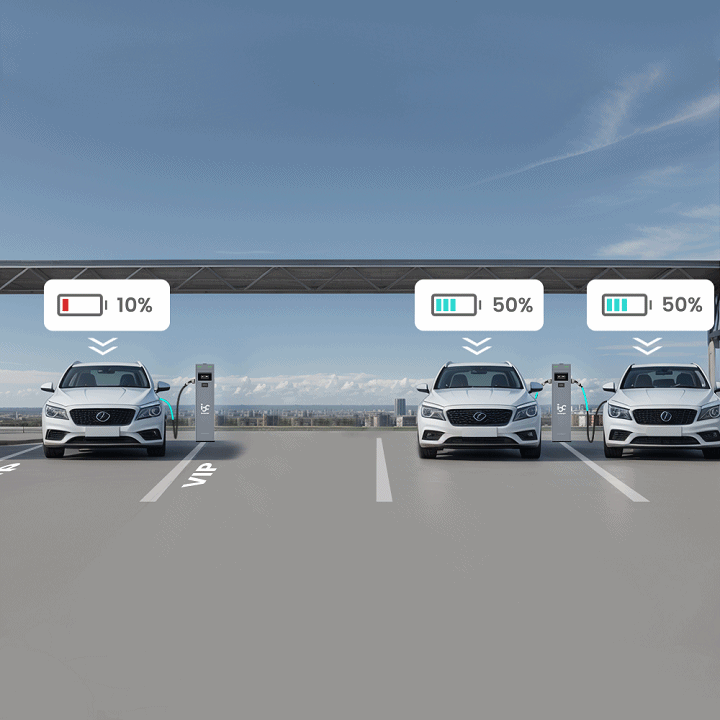
In the context of EV charging, dynamic load management (or DLM) refers to optimizing a property’s charging loads to ensure the most efficient use of the power available between EV Chargers and other appliances on-site and protect local grid network from overloading, without spending on a dime on expensive construction work.
Benefits of Dynamic Load Management
Now days load sharing becomes more and more important as the number of chargers and vehicles increases.
For example, there are some scenarios where electric panels are oversubscribed purposely to accommodate more chargers than typically possible. Let’s consider a parking lot with 50 spots and 50 chargers. In most cases, it is rare that all 50 chargers will be used at the same time. This could be for a variety of reasons, such as some parking spots are occupied by non-EVs, some vehicles have already finished charging and are simply parked, or the parking lot happens to be quiet at that time of day, etc. Therefore, the site’s total capacity might be significantly less than the power required to use all 50 chargers at the same time, since it is anticipated that not all the chargers will be used simultaneously.

A dynamic load management system ensures that the power is split evenly across all the active chargers safely and efficiently. In the event that the total load at the site exceeds the available capacity of the parking lot, for example, when all 50 chargers are in use, the Load Management system will limit the power supply to the chargers, allowing vehicles to charge but at a slower pace. This form of managed charging allows more chargers to be installed at a location and grid upgrades can be avoided.
